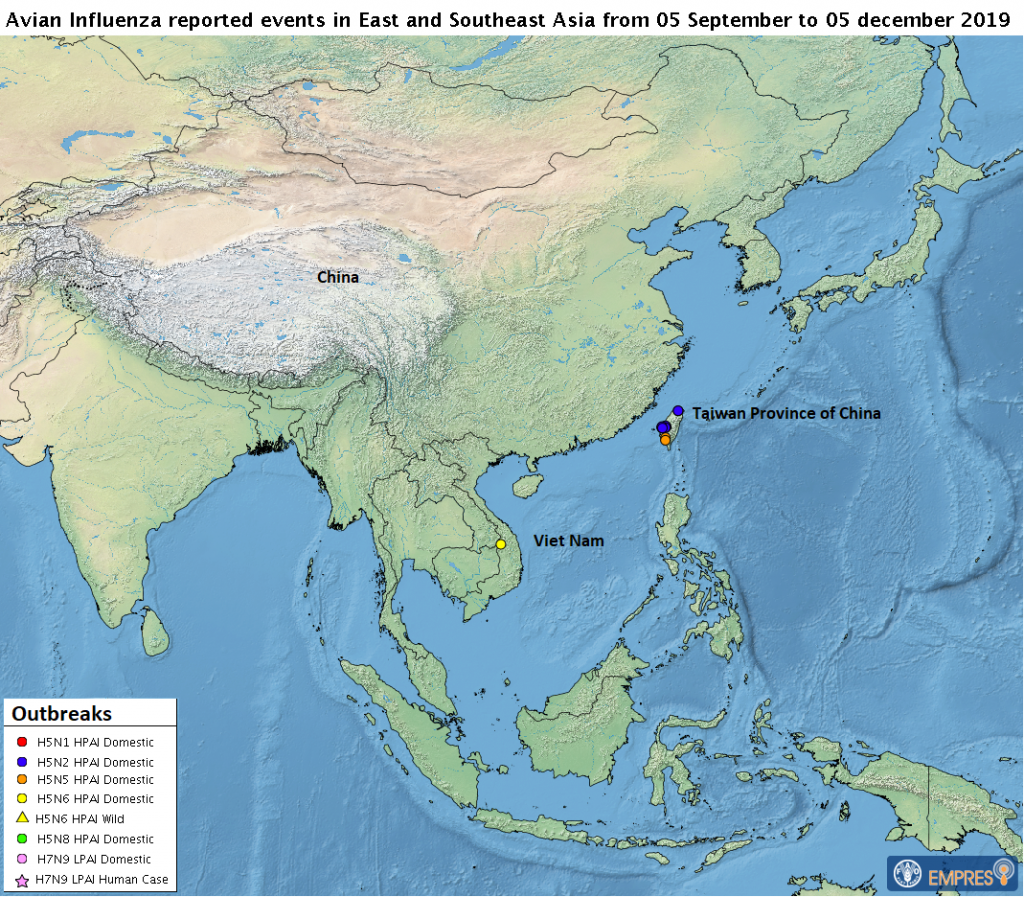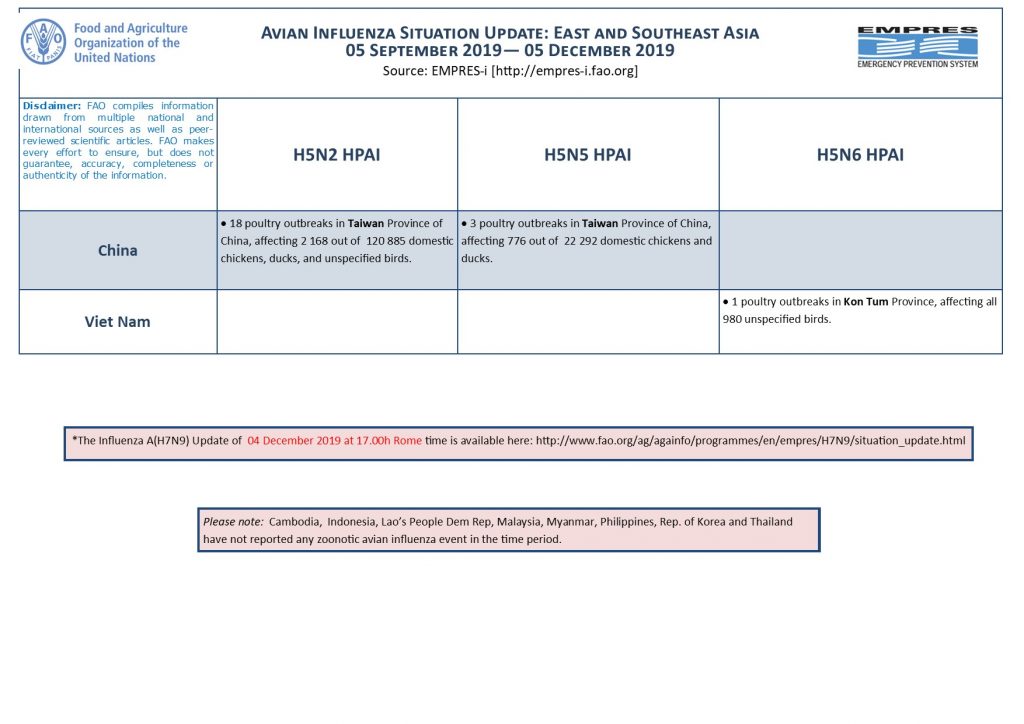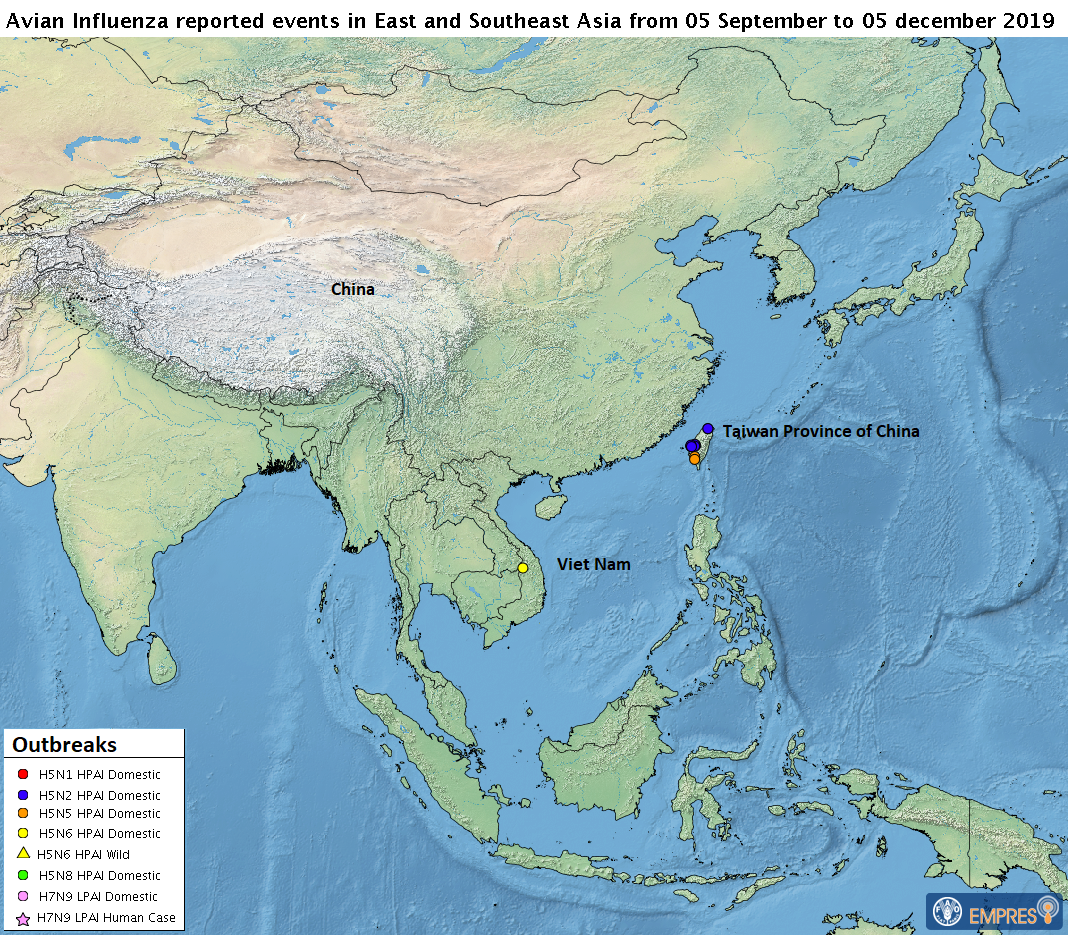FAO/EMPRES-AH is constantly monitoring the avian influenza situation worldwide and compiles information from multiple national and international sources as well as peer-reviewed scientific articles. Close collaboration with country and regional offices, the implementation of avian influenza field surveillance projects, and networks of expertise like OIE/FAO’s OFFLU (www.offlu.net) provide access to timely information on outbreaks, surveillance findings, and genetic similarities of circulating viruses or their virological features. This information is stored in the EMPRES Global Animal Disease Information System (EMPRES-i), a database that can be accessed online at empres-i.fao.org.
During the period 5 September to 5 December 2019, three different avian influenza virus subtypes have been reported in South-East Asia, all three being highly pathogenic in poultry (H5N2, H5N5 and H5N6 HPAI). In Taiwan, Province of China, 18 outbreaks in poultry were confirmed to be caused by H5N2 HPAI affecting a range of domestic bird species including chickens and ducks. H5N5 HPAI was first reported in Taiwan, Province of China in September 2019 and caused three outbreaks in domestic chickens and ducks. This H5N5 HPAI virus is phylogenetically close to viruses circulating in Europe in 2016-2017. In addition, H5N6 HPAI caused one poultry outbreak in Viet Nam’s Ba Kon Tum Province.
Highly pathogenic H5N2, H5N5 and H5N6 viruses have also demonstrated the ability to spread via migratory water birds.
We consider avian influenza activity to be highest in the period from December to March, thus reports of outbreaks in poultry or detections in wild birds and humans are expected to increase over the coming months in the region.







